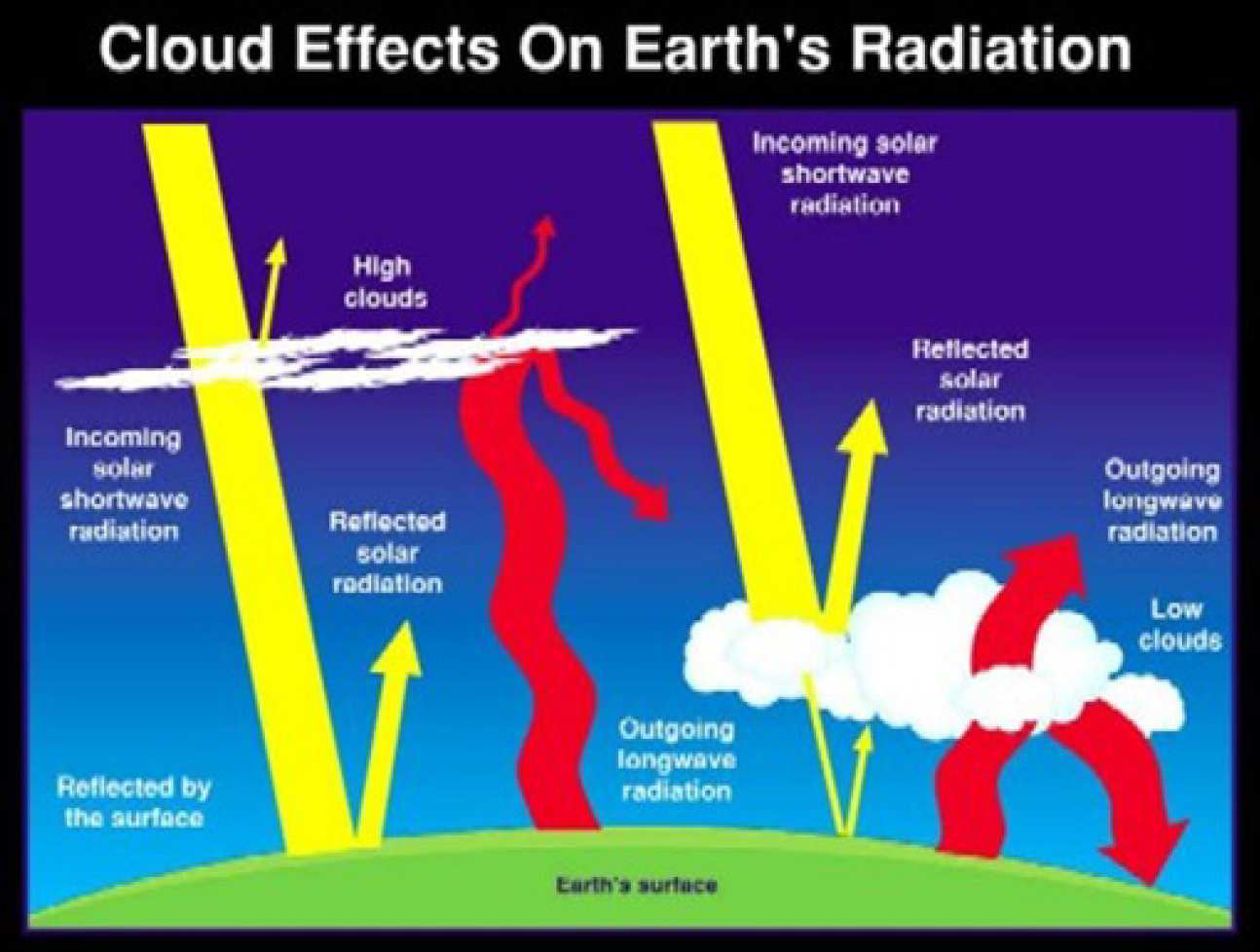 Understanding the processes which control the natural stability and variability of the climate system, and which dictate how man's activities might modify the climate balance is one of the most difficult and challenging, yet critically important, scientific problems facing mankind today. The interaction between water vapour, clouds and their radiative impact is one of the processes most urgently required to achieve progress in this goal. The Earth's Radiation Budget (ERB) is the balance between the incoming radiation from the sun and the outgoing reflected and scattered solar radiation plus the thermal infrared emission to space. Clouds, and water vapour to a lesser extent, affect the radiation budget by reflecting incoming solar radiation and by absorbing some of the Earth's thermal energy emitted back out to space. Solar radiation reaching the surface of the planet in turn affects cloud cover by heating the surface and decreasing the stability of the lower atmosphere, which is a large factor in cloud formation. One of the most problematic issues in studying clouds is their transient nature - they are continuously changing in space, both horizontally and vertically, and in time, which makes their study very difficult.
Understanding the processes which control the natural stability and variability of the climate system, and which dictate how man's activities might modify the climate balance is one of the most difficult and challenging, yet critically important, scientific problems facing mankind today. The interaction between water vapour, clouds and their radiative impact is one of the processes most urgently required to achieve progress in this goal. The Earth's Radiation Budget (ERB) is the balance between the incoming radiation from the sun and the outgoing reflected and scattered solar radiation plus the thermal infrared emission to space. Clouds, and water vapour to a lesser extent, affect the radiation budget by reflecting incoming solar radiation and by absorbing some of the Earth's thermal energy emitted back out to space. Solar radiation reaching the surface of the planet in turn affects cloud cover by heating the surface and decreasing the stability of the lower atmosphere, which is a large factor in cloud formation. One of the most problematic issues in studying clouds is their transient nature - they are continuously changing in space, both horizontally and vertically, and in time, which makes their study very difficult.
Previous measurements of the ERB from satellites concentrated on covering the entire globe, but to accomplish that means compromises in time sampling and usually measurements were only made once a day. GERB data from MSG-1 and -2 will give almost continuous 15 minute coverage over much of Europe, Africa, Asia and parts of South America, Australia and the Atlantic, Indian and Pacific Oceans. This will provide a unique opportunity to study the interactions between the processes discussed above, through observations and modelling, and will provide strong synergy with low-earth orbiting instruments such as Clouds and the Earth's Radiant Energy System, SCaRaB, and with the SEVIRI sensor on MSG. This is extremely important as a thorough understanding of our climate system will only be achieved by merging accurate observations from both geostationary and polar orbiting satellites. This crucial area of science has strong practical relevance to global climate change, food production and natural disaster prediction.
The region covered by MSG is of particular interest in understanding such interactions, as it covers not only deep continental convection forced by strong surface heating over land, but also the maritime convection over the tropical oceans and the important area of stratocumulus convection over the South Atlantic. Observations from GERB will provide new information on the interactions between the radiation budget terms, tropical convection and dynamics, and new ways of validating these interactions in diabatic models. It is not possible to obtain rigorous tests of these processes represented in the models with only ERBE data from polar orbiting instruments, because of the problems due to their sampling regimes. The continuous temporal coverage will also provide ERB information for field studies, whether at the land surface or within the atmosphere. GERB is providing a unique new view of these processes, and a unique new set of quantitative data with which to study the most important climate-radiative processes. Follow this link for a list of some GERB publications, including some of the latest science.